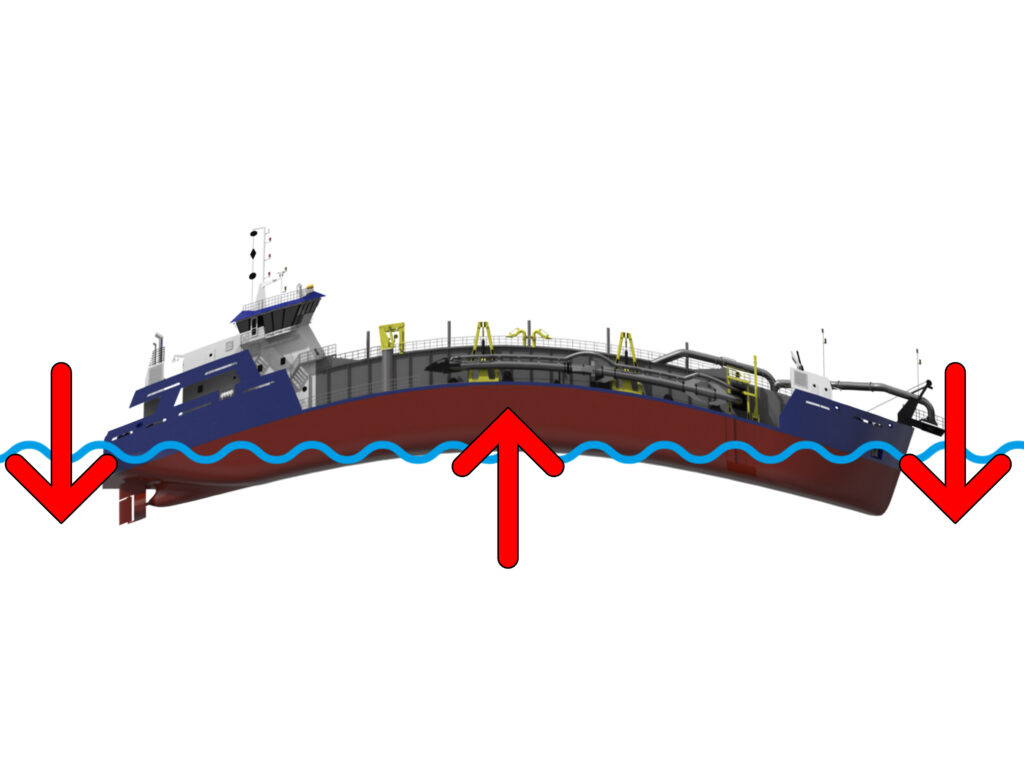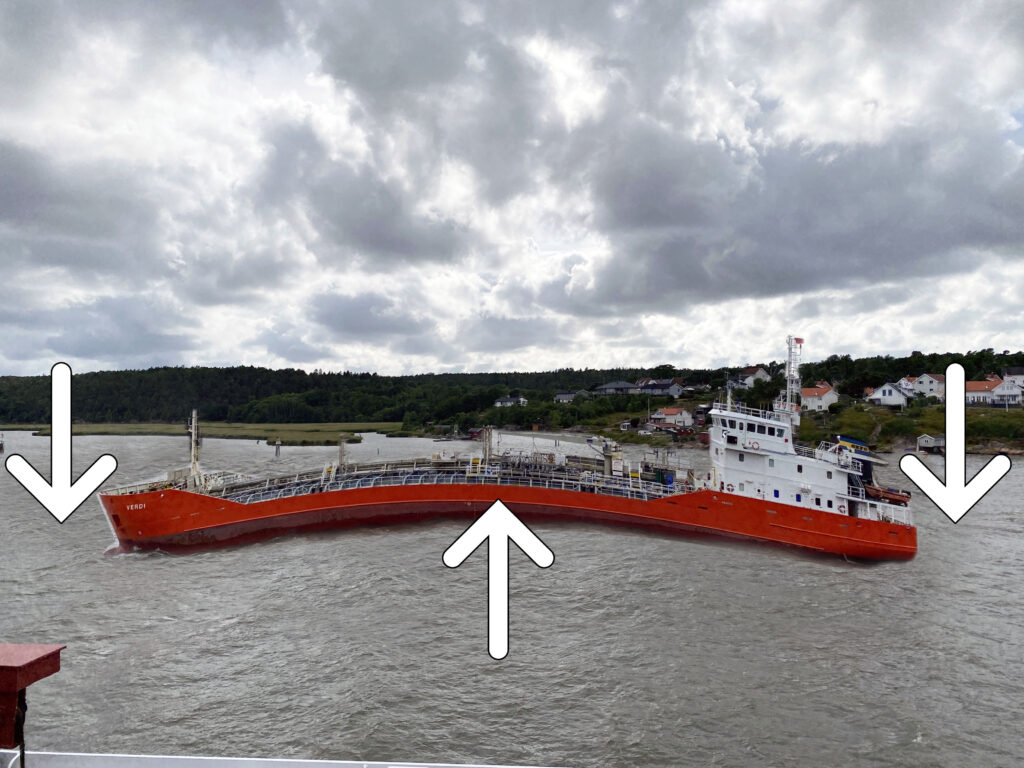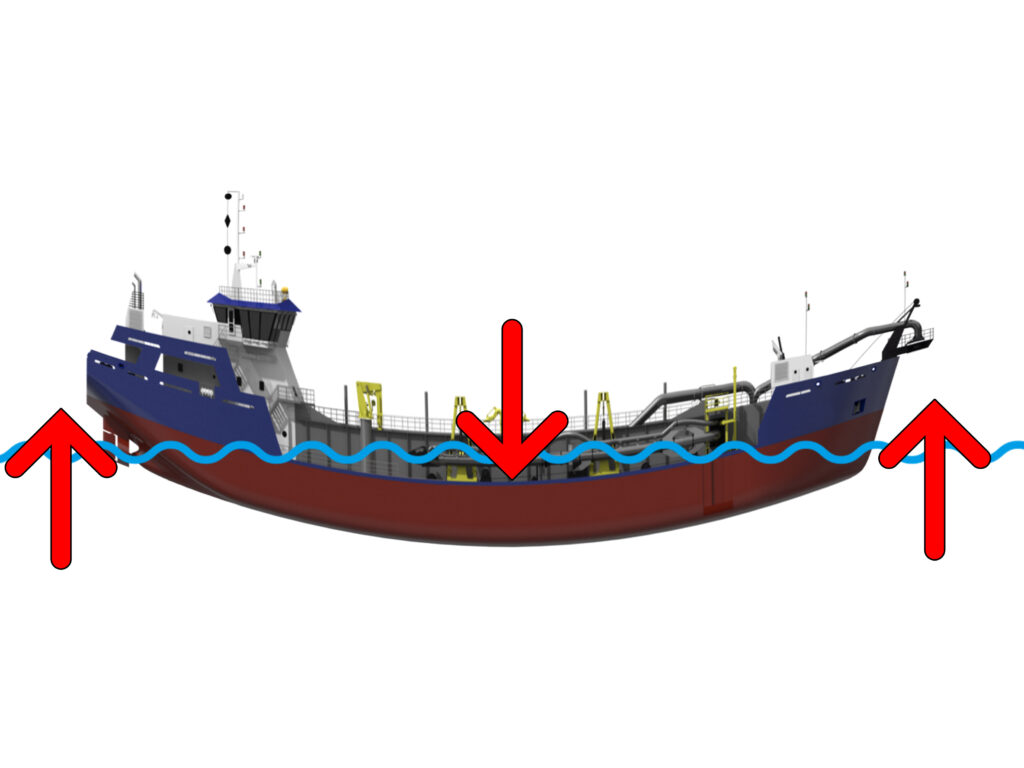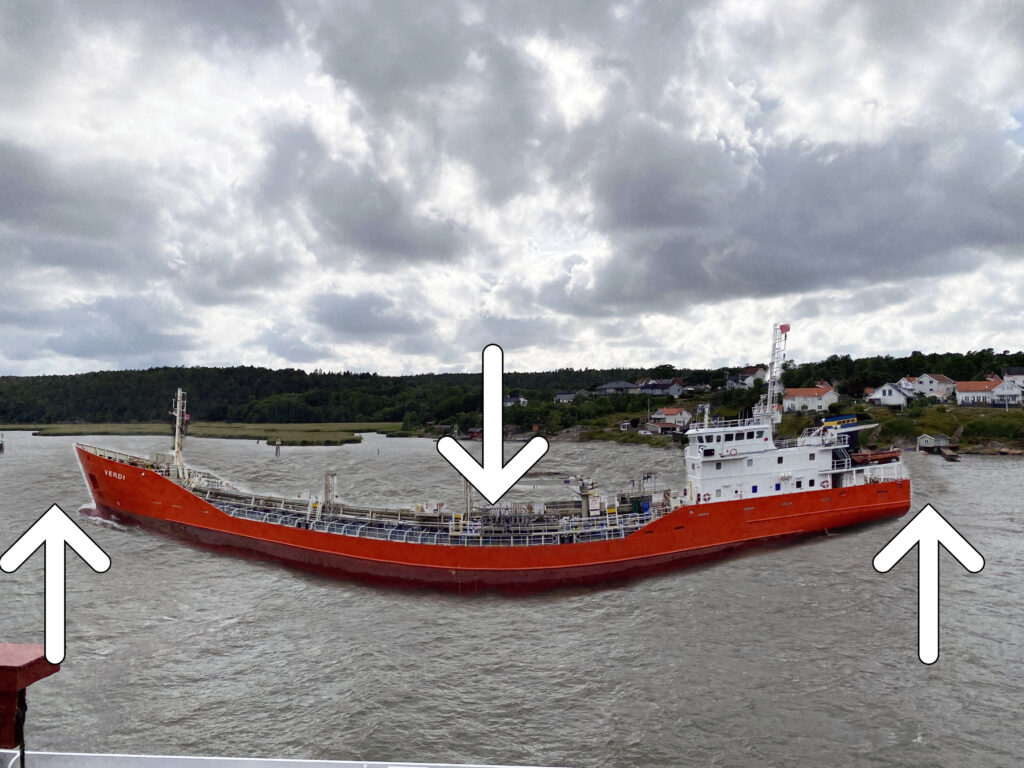The shipping industry is one of the most important and complex industries in the world. It is responsible for transporting goods and materials from one place to another. In order to maintain the safety and efficiency of these operations, it is essential to understand the various phenomena that affect ships and their performance.
One such phenomenon is hogging and sagging, which refers to the deformation of ships caused by various external factors. In this article, we will explore what hogging and sagging of ships means, how it occurs, and their impact on the stability and safety of vessels.

What is Hogging in Ships?
Hogging is a term used to describe the upward curvature of a ship’s hull, which results in the bow and stern of the vessel being lower than the middle portion. This can occur when a ship is carrying a heavy load or due to the action of waves. The weight distribution and the structural design of the ship also play a role in hogging.
What Causes Hogging in Ships?
There are several factors that can cause hogging in ships, including:
- Loading of cargo: When a ship is loaded with heavy cargo, the weight distribution is uneven, causing the middle portion of the ship to rise and the bow and stern to sink.
- Wave action: The waves can also cause hogging by exerting a downward force on the ship’s bow and stern and an upward force on the midship.
- Structural design: The design of a ship’s hull and its longitudinal strength also play a role in hogging. If the hull is not designed to resist the bending moments caused by heavy loads or wave action, it can result in hogging.

Impact of Hogging on Ships:
Hogging can have several negative effects on a ship, including:
- Reduced stability: Hogging can reduce the stability of a ship, making it more susceptible to capsizing or sinking.
- Increased stress on the hull: The deformation of the hull can result in increased stress on the structure, which can lead to cracking or failure.
- Decreased speed: Hogging can also reduce the speed of a ship, as the increased drag from the deformed hull can slow it down.

What is Sagging in Ships?
Sagging is the opposite of hogging and refers to the downward curvature of a ship’s hull. This occurs when the middle portion of the ship is lower than the bow and stern. Sagging can be caused by the same factors as hogging, including heavy loads, wave action, and structural design.

Impact of Sagging on Ships:
Sagging can also have negative effects on a ship, including:
- Reduced stability: The downward curvature of the hull can reduce the stability of a ship, making it more susceptible to capsizing or sinking.
- Increased stress on the hull: The deformation of the hull can result in increased stress on the structure, which can lead to cracking or failure.
- Decreased speed: Sagging can also reduce the speed of a ship, as the increased drag from the deformed hull can slow it down.
How to prevent hogging and saving
To prevent hogging and sagging, the following measures can be taken:
- Proper weight distribution: When loading cargo onto a ship, it is important to distribute the weight evenly to prevent hogging and sagging. This can be achieved by using load sensors and proper load planning.
- Structural design: The hull of a ship should be designed to resist the bending moments caused by heavy loads and wave action. This can be achieved by using high-strength materials and incorporating structural reinforcements into the design.
- Regular inspections and maintenance: Regular inspections of the ship’s structure can help identify any potential issues early on and prevent hogging and sagging from occurring. Maintenance and repairs should be performed promptly to ensure that the ship’s structure remains strong and stable.
- Trimming and ballasting: Proper trimming and ballasting can help reduce the risk of hogging and sagging. Trimming refers to adjusting the position of the ship’s center of gravity, while ballasting involves adjusting the amount of water in the ship’s ballast tanks to maintain stability.
- Proper routing: Avoiding areas with heavy waves and adverse weather conditions can help prevent hogging and sagging from occurring. Proper routing and voyage planning can help ensure that ships are operated in a safe and efficient manner.
By implementing these measures, it is possible to prevent hogging and sagging and maintain the stability and safety of ships.
How to determine if a ship is hogging or sagging?
There are several ways to determine if a ship is hogging or sagging:
- Visual inspection: A visual inspection of the ship’s hull can reveal any deformations that could indicate hogging or sagging. The most common visual inspection is draft reading fore and aft compared to midship drafts on the port and starboard side. This can also be performed using divers, remotely operated vehicles, or other means.
- Load sensors: Load sensors can be used to measure the weight distribution on a ship and detect any deviations that could lead to hogging or sagging. These sensors can provide real-time data that can be used to make adjustments to the ship’s load or trim to prevent the phenomenon from occurring.
- Hull deformation monitoring: Hull deformation monitoring systems can be used to measure the shape of the ship’s hull and detect any deformations that could indicate hogging or sagging. These systems can provide real-time data that can be used to identify and address any issues before they become more serious.
- Surveys: Surveys can be conducted on a regular basis to inspect the ship’s structure and identify any potential issues related to hogging and sagging. These surveys can be performed by divers, remotely operated vehicles, or other means and can provide valuable information about the ship’s condition.
By using these methods, it is possible to determine if a ship is hogging or sagging and take appropriate actions to prevent the phenomenon from occurring or becoming more serious.
Conclusion
Hogging and sagging are important phenomena that affect the stability and safety of ships. Understanding the causes and impacts of these events can help ensure that ships are designed and operated in a way that minimizes their effects. By properly designing ships and monitoring their performance, the shipping industry can maintain its high level of safety and efficiency, and continue to play a vital role in the global economy.
- Types of Gas Carriers as per IGC Code – April 22, 2025
- Wind-Assisted Propulsion Systems (WAPS): A Game Changer for Maritime Decarbonization – February 6, 2025
- 10 Boat Salvage Yards in California – January 25, 2025



